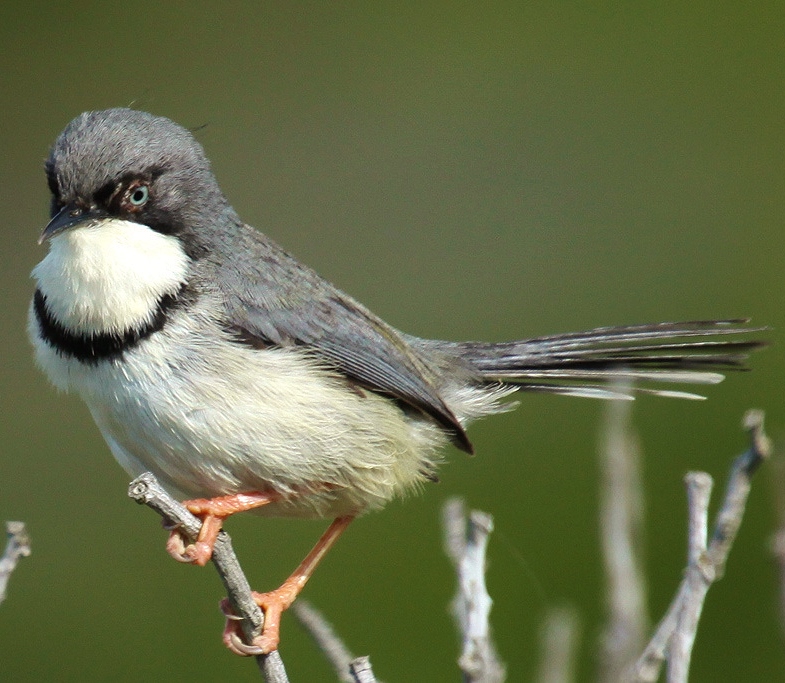 |
| (Photo from Hermanus Bird Club) |
Common name:
bar-throated apalis (en); apalis-de-coleira (pt); apalis à collier (fr); apalis de garganta barreada (es); halsband-feinsänger (de)
Taxonomy:
Order Passeriformes
Family Cisticolidae
Range:
This species is found in eastern and southern Africa, from southern Kenya, through Tanzania, Zambia, Mozambique and Zimbabwe, and into eastern and southern South Africa.
Size:
These birds are 11-13 cm long and weigh 12 g.
Habitat:
The bar-throated apalis is found in tropical moist forests and scrublands, but also second growths, riparian forests, dry scrublands around sand dunes, grasslands, rural gardens and plantations.
Diet:
They mainly eat invertebrates gleaned from leaves and twigs, such as caterpillars, flies, grasshoppers, bugs and spiders, supplemented with fruits and flowers.
Breeding:
Bar-throated apalises breed in August-March. The nest is an oval ball with a side entrance, made of fine grasses, moss, lichens and rootlets, secured with spider web. It is typically placed among the foliage of scrub, sapling or creeper, 1-3 m above ground. The female lays 2-4 bluish-white eggs with reddish-brown spots, which are incubated by both parents for 14-18 days. The chicks are fed by both parents and fledge 13-18 days after hatching, but only become independent some time later.
Conservation:
IUCN status – LC (Least Concern)
This species has a very large breeding range and is described as common in most areas. The population is suspected to be stable in the absence of evidence for any declines or substantial threats.







